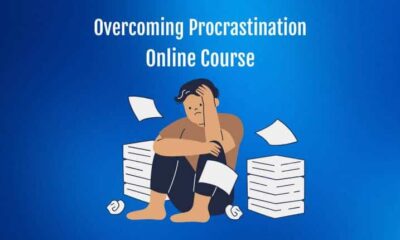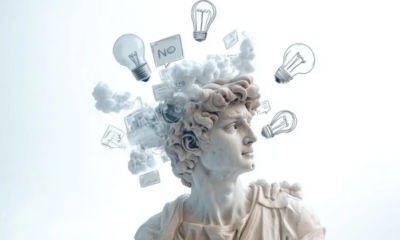Motivation
How to Interpret and Break through Creative BlocksPick the Brain

By Ronald Alexander
Having worked as a mind-body therapist with creative clients for over four decades, I have come to realize that blocks to creativity can stem from past losses or trauma, catching us off guard.
One of my clients, a successful writer, suddenly found herself facing writer’s block after many years of productive work. She described feeling trapped inside a block of ice, with frozen arms and hands, unable to generate ideas or put words on the page.
Through several sessions where I gathered her medical and psychological history, I began to suspect that unconscious trauma and abuse were at the root of her creative block. It became clear that she needed to address and release the pain and negative emotions in order to move forward in her writing journey. I believed that Somatic Experiencing therapy, focused on processing trauma, could help her overcome this blockage.
As we delved into her feelings and memories, she started to uncover past experiences of abuse that she had long buried. Through this process, she began to have dreams related to the screenplay she was struggling to write, and her writer’s block gradually started to dissolve.
This experience highlighted the importance of addressing deeper emotional issues that may be contributing to creative blocks. Sometimes, the feeling of being stuck in our work is a sign that our unconscious mind is trying to bring attention to unresolved trauma or emotions.
It’s essential to understand that emotions are not just confined to the brain; they manifest in our bodies as well. Even if we are not consciously aware of trauma, emotional energy can get trapped in our bodies. Practices like mindfulness meditation, yoga, and Tai Chi can help us connect with these emotions and release any stored energy related to trauma.
Here are four techniques to help you tap into your emotions:
1. Immerse yourself in artistic expression. Visit museums, attend performances, or explore online art sources to connect with different forms of creativity.
2. Tune into your feelings. Practice mindful listening and pay attention to your emotional responses during artistic experiences. Write down your thoughts and reflections to deepen your connection with your emotions.
3. Engage with inspiring content. Watch films or read books that evoke strong emotions and reflect on why they resonate with you.
4. Use deep breathing to process distress. When uncomfortable emotions arise, practice deep, slow breathing to calm your nervous system and release emotional energy.
Engaging in these activities can help bring buried emotions to the surface and provide insights into unresolved issues. By connecting with your emotions, you may discover hidden trauma or unexplored aspirations that can fuel your creative expression.
* * *
Ronald A. Alexander, PhD, is the author of the new book, Core Creativity: The Mindful Way to Unlock Your Creative Self (Rowman & Littlefield, June 21, 2022), on which this article is based. He is a creativity coach, consultant, and mind-body psychotherapist with a practice in Santa Monica, California. Learn more about his work at www.CoreCreativity.com.
Erin shows overscheduled, overwhelmed women how to do less so that they can achieve more. Traditional productivity books—written by men—barely touch the tangle of cultural pressures that women feel when facing down a to-do list. How to Get Sh*t Done will teach you how to zero in on the three areas of your life where you want to excel, and then it will show you how to off-load, outsource, or just stop giving a damn about the rest.
-

 Destination9 months ago
Destination9 months agoSingapore Airlines CEO set to join board of Air India, BA News, BA
-

 Breaking News10 months ago
Breaking News10 months agoCroatia to reintroduce compulsory military draft as regional tensions soar
-

 Gadgets4 months ago
Gadgets4 months agoSupernatural Season 16 Revival News, Cast, Plot and Release Date
-

 Tech News1 year ago
Tech News1 year agoBangladeshi police agents accused of selling citizens’ personal information on Telegram
-

 Productivity12 months ago
Productivity12 months agoHow Your Contact Center Can Become A Customer Engagement Center
-

 Gadgets1 month ago
Gadgets1 month agoFallout Season 2 Potential Release Date, Cast, Plot and News
-

 Breaking News10 months ago
Breaking News10 months agoBangladesh crisis: Refaat Ahmed sworn in as Bangladesh’s new chief justice
-

 Toys1 year ago
Toys1 year ago15 of the Best Trike & Tricycles Mums Recommend























